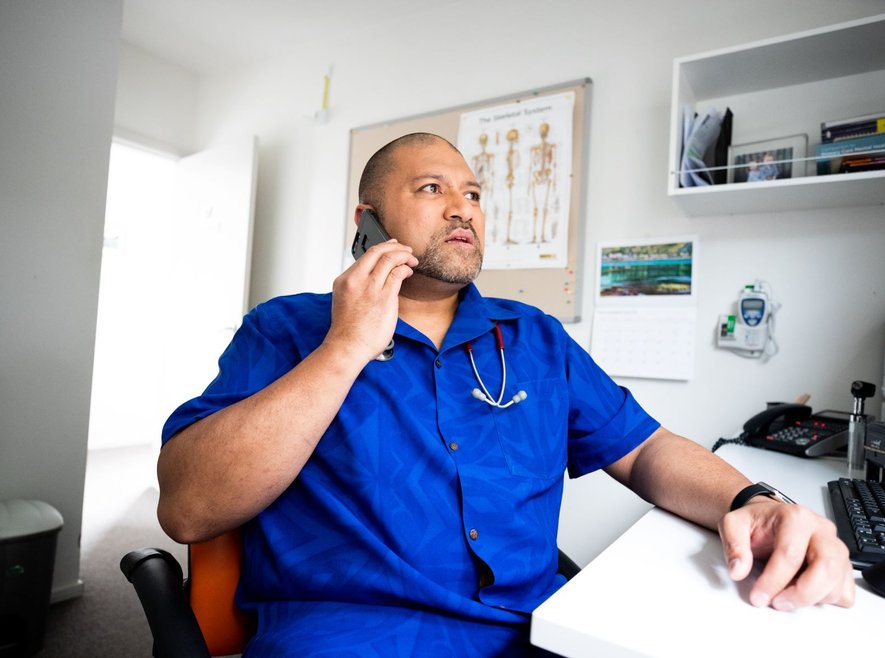1.2 Informed consent
1.2 Informed consent - Right 7
Consent may be considered as informed if an interactive process occurs between clinicians and patient, enabling the patient to gain an understanding of their condition and how it can be managed. It is more than signing a form and completing paperwork and includes assessing any expected risks, side effects, benefits and costs to the patient (if any) of each option.
| Standard – what we’ll be assessing on | Evidence to provide for assessment |
|---|---|
|
1.2 The practice ensures a patient’s right to make an informed choice and give informed consent. [Right 7]. |
|
Working collaboratively with patients, involving their family/whānau/caregivers where possible, and supporting the patient to take as active a role as possible in decisions about their care is key to achieving informed consent.
The patient has the right to:
- Consider the information given
- Ask for clarification and ask for time to consider the information
- Consult with family/whānau and others
- Give consent or decline to give consent
- Waive the right to discuss the details of treatment
- After having given consent, change their mind and withdraw the consent.

Compulsory written informed consent
Informed consent must be in writing if any of the following apply:
- The patient is to participate in any research
- The procedure is experimental
- The patient will be under general anaesthetic
- There is a significant risk of adverse effects on the patient
- Other situations such as vaccinating in an offsite vaccination programme such as at a place of work or at a school.
Practices may employ a shared decision-making process of informed consent. Shared decision making is a process in which the patient and the clinician both contribute to the paths and actions involved in a patient’s care.
A shared decision-making process of informed consent would involve:
- Communicating evidence-based information and clinical expertise about care options, including clear explanation of benefits and risk of harm for each option
- Acknowledging and confirming who is involved in the shared decision-making process (for example, family/whānau).
- Considering patient preferences, beliefs and values in care
- Clinician and patient collaborating on care decisions
- Documenting written or verbal consent/withdrawal/denial of consent in clinical notes.
If the patient is not attending an ‘in person’ consultation, there needs to be a process within your practice of how patient consent may be obtained for some treatments. For example. this could be in the form of a recorded voice message, an email, fax, or text. The patient consent must be added to their medical records in the Practice Management System (PMS) as well as documented into the notes by the health provider.

Patients with literacy/ language/communication difficulties
Communication difficulties come in many forms; some examples are:
- Hearing disorders and deafness
- Voice or speaking problems
- Developmental disabilities
- Learning disabilities
- Autism spectrum disorder
- Brain injury
- Stroke
- Language barriers
- Illiteracy.
Literacy
Adult literacy issues can be addressed in health care by identifying patients who experience problems with reading and comprehension. One in four adult New Zealanders struggle with some of the literacy skills they need in their everyday life. If illiteracy problems are missed, we lose opportunities to help. If a patient is identified or self identifies with illiteracy problems, finding alternative ways of communicating information to them will provide patients with the ability to make informed decisions on their healthcare. To ensure all team members are aware of patients with communication or literacy issues, using features in the PMS such as an alert or classification, will ensure a consistent approach.
Health literacy
Health literacy is important for patients because it affects their ability to make decisions and give informed consent and therefore manage their health and health care. Health literacy is the degree to which individuals have the capacity to obtain, process, and understand the basic health information needed to make appropriate health decisions.
Low health literacy is more prevalent among:
- Older adults
- Minority populations such as refugees
- Those who have low socioeconomic status
- Underserved and marginalised populations.
Examples of personal health literacy include understanding prescription drug instructions, understanding the health providers instructions and consent forms, and the ability to navigate the complex healthcare system.
Awareness of health literacy is important for healthcare providers because it affects the way they manage their relationships and deliver health care to patients. One example of how health providers and practices can minimise health literacy difficulties is by using plain/simple English in all patient correspondence, consent forms and information sheets.